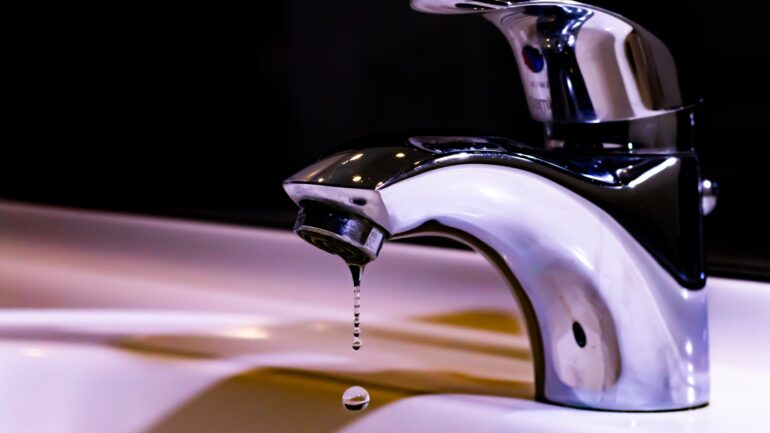By Caroline Majewski, Publishing Associate: Researcher and Writer at Save the Water™ | August 23, 2023
The New Sponge
Algal blooms are an increasing worry in our water systems. Current ways of getting rid of harmful algal blooms (HABs) don’t work well enough. The methods are not practical or efficient in their practice. It’s hard to recover the treatment once it’s used. Specifically, the powdered catalysts are dispersed into the water. In short, the methods aren’t effective enough to use on a large scale to combat HABs.
A new study in the American Chemical Society Environmental Science and Technology (ACS ES&T) Water shows an improved method for treating HABs. The method uses a floating sponge. Previous research shows the effectiveness of acids and strong oxidizing agents. These substances damage and destroy the cells. However, they leave byproducts. Therefore, researchers at Hunan University set out to improve this method.
As a result, they improved on a sponge method with a biochar powder that works with an oxidizing agent. This destroys algal cells in bodies of water and is reusable. Meanwhile, it doesn’t release byproducts into the water.
What’s it Made of?
This process begins with a market-available melamine (plastic) sponge. The next step coats the sponge in a charcoal-like powder. This biochar is a carbon-containing waste derived from shrimp shells. The shrimp shells are washed, smashed, sieved, and then pyrolyzed in a tubular reactor. The powder acts as the catalyst needed for the oxidizing agents to work.
The researchers use extreme heat to combine a thin layer of polyvinyl alcohol between the sponge and biochar. This layer links the melamine and biochar. Both of these work together with the persulfate-based oxidizing agent. Consequently, this process allows the sponge to attack algal cells with more power than previous methods.
By using these materials in this way, the sponge floats. Therefore, it can be removed after use without product discharge.
How it Works
Together, the powder and persulfate-based oxidants work to destroy the algal cells without leaving byproducts. This process targets algae on a cellular level to inactivate it and break down different parts of the cell. This process results by attacking the cell membranes and damaging their antioxidant systems. There are three steps to this process:
- Split membranes apart
- Release cell’s internal contents
- Break down contents into smaller components
In a lab environment, the sponge targeted and damaged about 90% of the algal cells. The M. aeruginosa cell membranes were damaged within 5 hours. When tested in real bodies of water, the sponge inactivated more than 85% of the cells. This result shows the oxidants used in this sponge improved its ability to absorb the cells.
After that, the oxidants can remove the sponge from the environment. It can even be reused later.
In short, the oxidizing agents mix with the powder to create a reaction that targets the algae. This process breaks down the algal cells.
Effects and Byproducts
The oxidants used in this type of method can create byproducts such as sulfate and hydroxyl radicals. In earlier versions, the oxidants leaked into the water without a way to collect them. Moreover, this caused concern about byproducts in the water. However, the researchers found that in this version the byproducts weren’t released and other substances weren’t leached into the water.
Consequently, the researchers now have to find the right fractions of oxidants and biochars to use in bigger bodies of water. Meanwhile, they must also consider efficiency and proportions for greatest effect.
What are Algal Blooms?
Algae are plants found in water. They contain a pigment known as chlorophyll. Chlorophyll helps the plants turn sunlight into food. Algae are found in all types of water (salt and fresh). They are a natural part of the ecosystem.
These algae are sorted into two different groups. First, seaweed algae are made up of plants with many cells. Second, phytoplankton are made up of single-celled plants. Environmental factors such as fertilizer can make the cells grow or bloom too large for the area.
If this happens with the few types of algae that produce toxins, it can cause negative side effects. As a result, toxin buildup can occur because of environmental factors getting out of balance.
Are They Harmful?
Not all blooms are harmful, but some can be. A HAB happens if the toxin-producing algae grows too much and too fast in a body of water.
Harmful blooms are normally caused by an overgrowth of phytoplankton. This, in turn, affects people, animals, and our environment in many ways:
- Change water color and smell
- Produce toxins
- Release harmful gasses
- Use up the oxygen in the water
- Block sun from the environment
- Create dead zones in water
HABs need a mixture of sunlight, slow-moving water, and nutrients to survive. They like water high in nitrogen and phosphorus.
Human activity can also lead to a HAB. Animal waste, agriculture, wastewater, acid rain, fossil fuels, and chemical spills all lead to more frequent and severe blooms.
Quick Tips for What You Can Do
These are a few actions you can take to limit your contribution to algal blooms:
- Use recommended fertilizers with no or low phosphorus
- Never fertilize before it rains
- Dispose of waste properly
- Pick up after pets
- Maintain your septic field, using septic safe products
All of these have the potential to leak materials into the water systems and increase the potential for algal blooms. Similarly, restrictions of these can lead to cleaner, happier bodies of water.
For algal blooms already here, the new sponge method of removal is a step forward.





